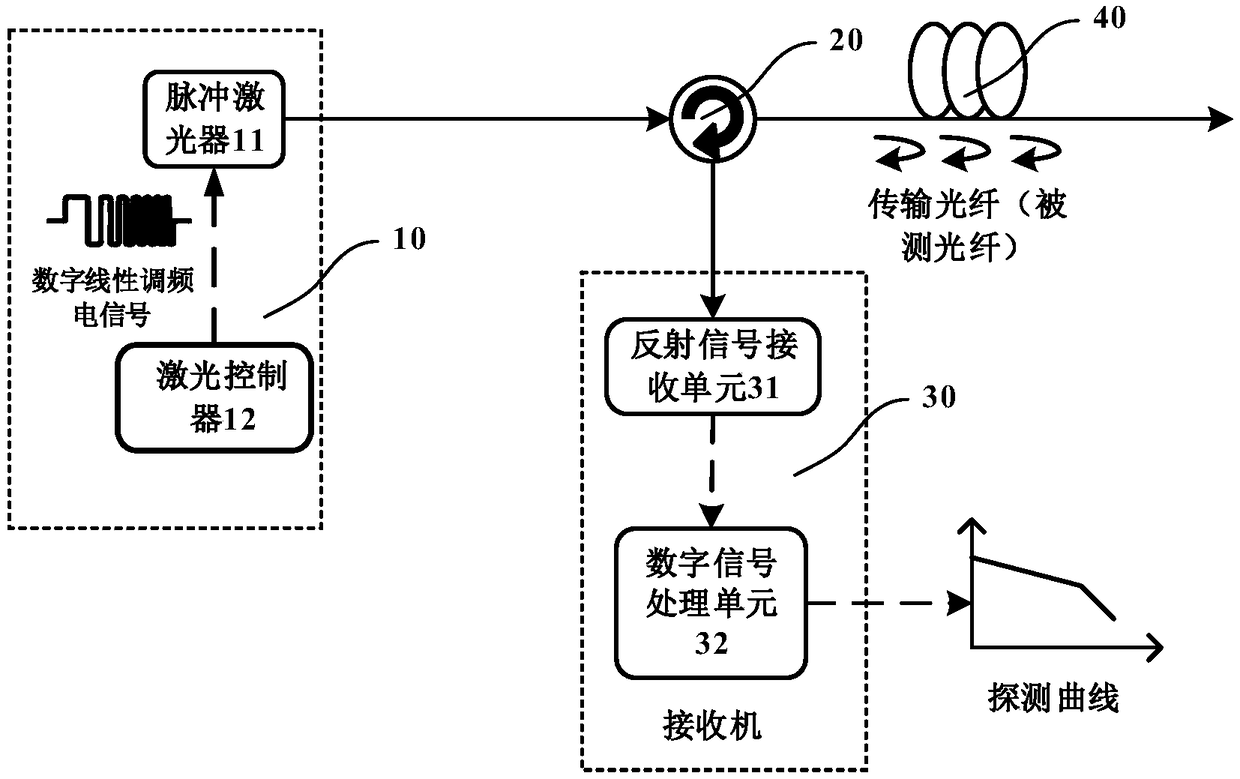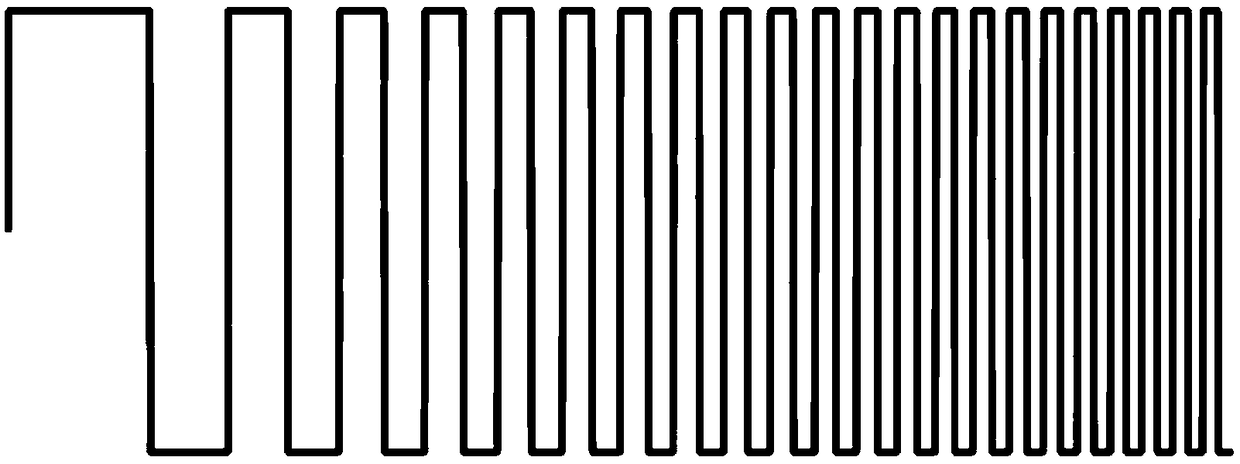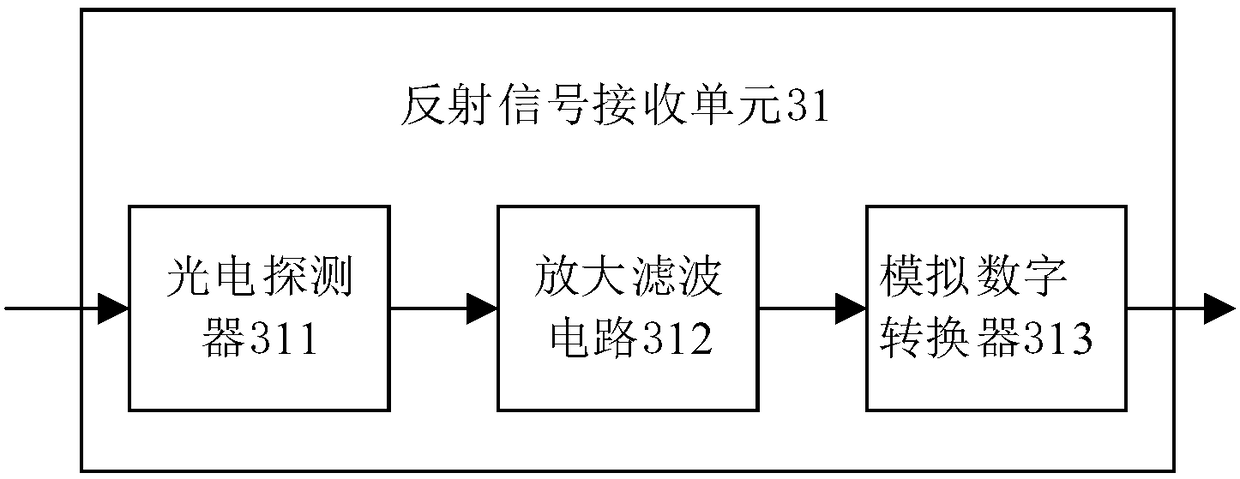An optical fiber link detection system and method based on digital modulation signal
A digital linear and frequency modulation signal technology, applied in the transmission system, electromagnetic wave transmission system, electrical components, etc., can solve the problems of high cost, conflict between dynamic range and measurement resolution, and achieve the effect of increasing equipment cost
- Summary
- Abstract
- Description
- Claims
- Application Information
AI Technical Summary
Problems solved by technology
Method used
Image
Examples
specific Embodiment 1
[0050] Such as figure 1 As shown, the digital chirp signal-based optical fiber link detection system provided in Embodiment 1 of the present invention includes a digital chirp signal generator 10 , a circulator 20 and a receiver 30 .
[0051] The digital chirp signal generator 10 is used to generate a digital chirp signal as a detection signal, and convert it into an optical pulse and inject it into the optical fiber 40 to be detected. In this specific embodiment, the digital chirp signal generator 10 is composed of a pulsed laser 11 and a laser controller 12 . The pulsed laser 11 is used to generate a pulsed optical signal. The laser controller 12 uses the periodic digital chirp electrical signal generated by the FPGA to control the pulsed laser 11 through the driver to generate corresponding optical pulses, and is injected into the detected optical fiber 40 by the circulator 20. (transmission fiber).
[0052] On the one hand, the circulator 20 injects light pulses into the...
specific Embodiment 2
[0064] In Embodiment 2 of the present invention, the receiver 30 includes a reflected signal receiving unit 31 and a digital signal processing unit 32 . The reflection signal receiving unit 31 is used to receive the backscatter signal output from the circulator 20 , convert it into a digital signal and transmit it to the digital signal processing unit 32 . The digital signal processing unit 32 is used to receive the digital signal output by the reflected signal receiving unit 31, and extract the optical fiber characteristics of the detected optical fiber carried on the chirp signal from the digital signal.
[0065] Further, the digital signal processing unit 32 uses the fractional Fourier transform algorithm to separate the chirp signals of different frequency modulation ranges from the noise, respectively extract the chirp signals of different frequency modulation ranges, and superimpose them, and output the curve track of the detection signal As an output result, the charact...
specific Embodiment 3
[0068] Such as image 3 As shown, the reflected signal receiving unit 31 includes a photodetector 311, an amplification and filtering circuit 312, and an analog-to-digital converter 313. The photodetector 311 is used to convert the backscattered signal from the circulator 20 into an analog electrical signal, and the amplification and filtering circuit 312 is used to amplify the analog electrical signal output by the photodetector 311 to filter part of the noise, and the analog-to-digital converter 313 is used to convert the analog electrical signal into a digital electrical signal for subsequent digital signal processing. Therefore, the conversion of the photoelectric signal to the digital signal is realized, and a part of the noise is filtered out, thereby improving the signal quality.
PUM
 Login to View More
Login to View More Abstract
Description
Claims
Application Information
 Login to View More
Login to View More - R&D
- Intellectual Property
- Life Sciences
- Materials
- Tech Scout
- Unparalleled Data Quality
- Higher Quality Content
- 60% Fewer Hallucinations
Browse by: Latest US Patents, China's latest patents, Technical Efficacy Thesaurus, Application Domain, Technology Topic, Popular Technical Reports.
© 2025 PatSnap. All rights reserved.Legal|Privacy policy|Modern Slavery Act Transparency Statement|Sitemap|About US| Contact US: help@patsnap.com



